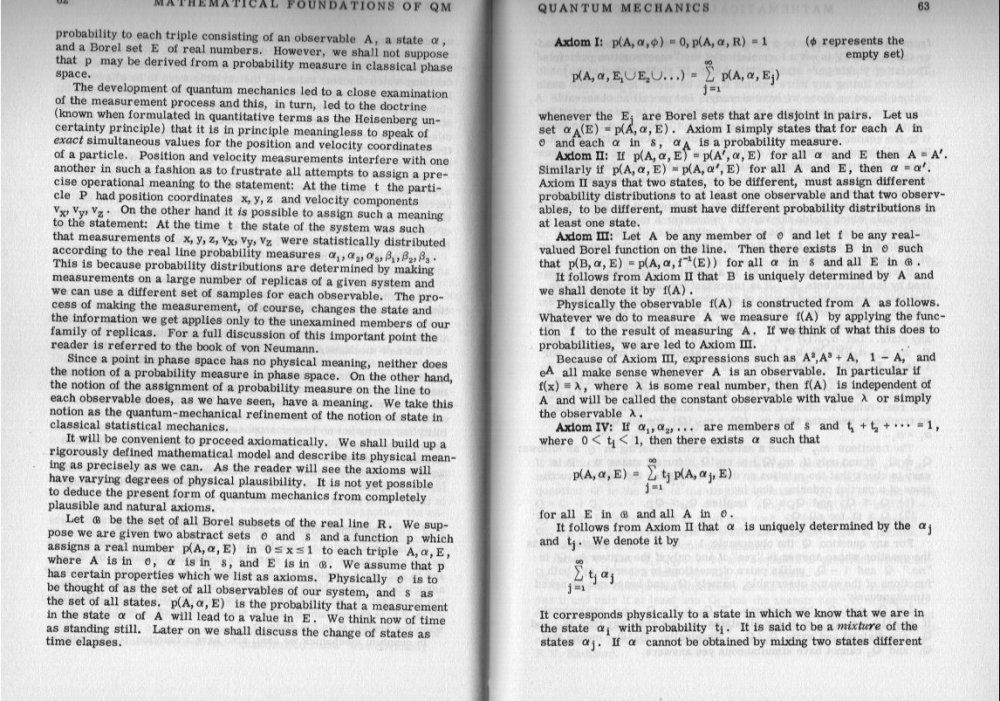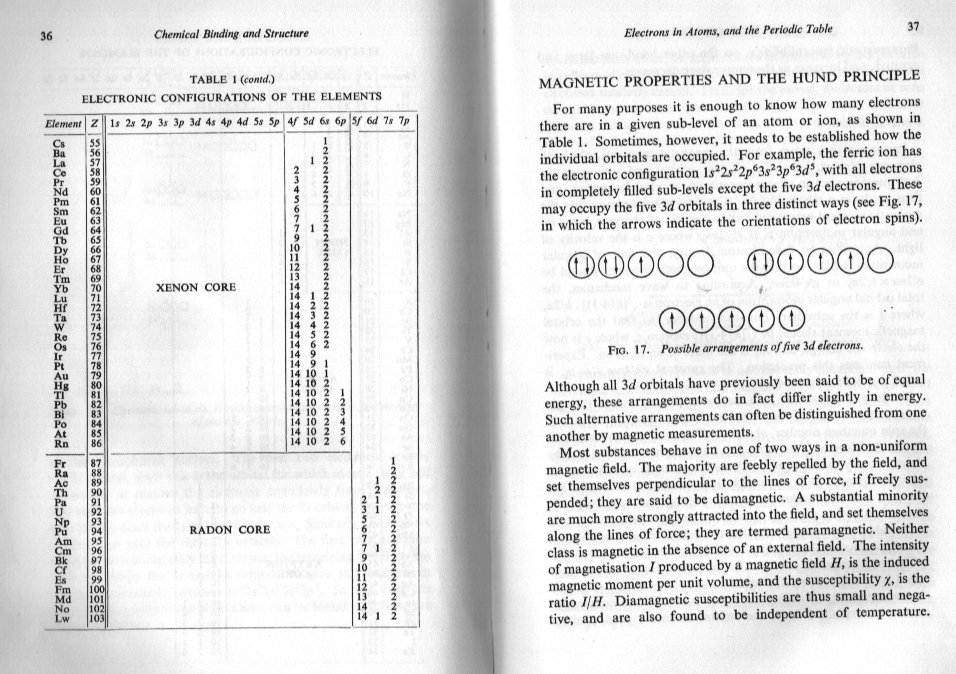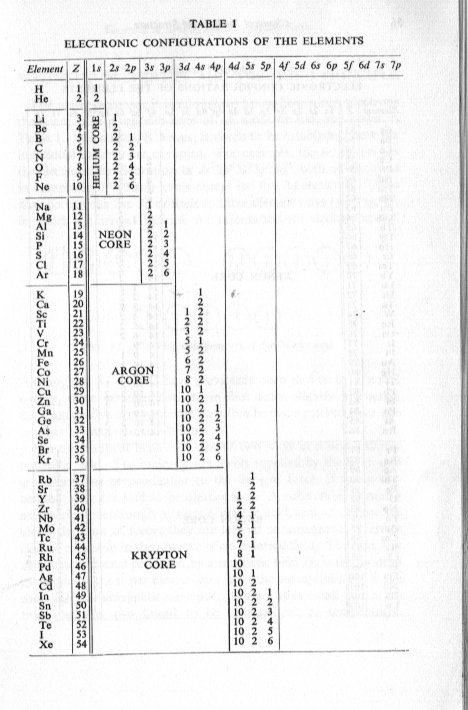-
Posts
18270 -
Joined
-
Last visited
-
Days Won
104
Content Type
Profiles
Forums
Events
Everything posted by studiot
-
Where do you see yourself in 20 years time. (Ecology, Geographic Information, Physical Science) These answer the following questions Why, What, How ? and lead to the following departments Management, Marketing or Methods?
-
It doesn't work like that. Energy is never all at one point in QM The total energy doesn't change because of the collapse, just the distribution. edit. Note in my extract, halfway down the left hand page "A point in phase space has no physical meaning" In classical science we attribute properties to things. So, for instance, the mass of an oxygen atom is 16 units whether it is buzzing about in an oxygen atom in the atmosphere , or combined with hydrogen atoms to form ocean water or locked into the rocks in the form of silica or iron oxide. But in QM we cannot attribute properties to a particle alone. The properties depend upon the environment. So the mass of an electron appears different depending upon whether it is within an ionic lattice, travelling freely in empty space or part of a free atom. Our method of measurement also affects the answer. This is quite separate from relativistic effects. I have not included those as they would only complicate matters and obscure the QM aspect. So when we talk about the properties of a particle in QM we always have to do this in relation to the environment.
-
Fields of force William Berkson Routledge Kegan & Paul 1974 Here is the beginning of the axiomatic mathematical process of deriving QM. Another dozen pages of development will arrive at axiom VIII which is the part of my previous post.
-
You need to understand the mathematics of Hilbert spaces to understand this issue. The linear combination may be finite or infinite, there is not restriction. The observables correspond one-to-one to the self adjoint operators in a separable Hilbert space of infinite dimension, H. The pure states correspond one-to-one to the one dimensional subspaces of H. Every state is a (possibly infinite) convex combination of pure states. (This is a mathematical statement of waveform generation and collapse) 'Collapse of the waveform' is linked to the so called 'measurement problem' or measurement paradox and is very difficult to discuss without some higher maths. Try reading here http://www.informationphilosopher.com/problems/measurement/ Essentially the measurement problem, waveform collapse and 'paradoxes' like Schroedinger's cat are about the crossover point from deterministic classical mechanics to probabilistic quantum mechanics and how this is handled.
-

What would be the first things to catch on fire during a CME?
studiot replied to LaGz's topic in Earth Science
Is that official BHF (British Heart Foundation) policy? -
Just testing to see who had died since my last post. Thanks. +1
-
Oh for goodness sake, where are all the real world rigid bodies, inelastic collisions, frictionless surfaces, perfect mirrors, truly adiabatic thermal processes.......
-
Did you hear the one about the appprentice and the fruit gum? This rather dopey apprentice was always chewing gum. One day a piece got transferred to his micrometer and got stuck against the base plate. Dopey didn't notice and went on using his micrometer. Thenceforth he measured with very poor accuracy but very great precision.
-

Ammeters and RESISTORS IN CIRCUIT
studiot replied to Sara Taboni Miller's topic in Classical Physics
Is English language the problem? I really don't understand what you were asking and it seems no one else was willing to hazard a guess either. So please try again to explain your question. -
Instead of thanking me every post and then totally ignoring what you are allegedly thanking me for, please pay attention to what I am saying and address my points. I hope they are quite simply put. And I do address the points you make.
-
Furthermore as our ability to increase that precision grows (eg the gravitational constant or charge on the electron) or as a result of change of base of measurement (eg temperature) we revise published tables of data. In the first case just some numbers (coefficients) are (usually) slightly altered in an existing formula In the second case the formule itself may be changed to suit. I don't think anyone would consider that 'falsifying theory', just improving the structure of Physics. The most dramatic case of this I can think of was correcting the mixup over atomic weights and atomic numbers and numbers of atoms in a given molecule by early chemists.
-
Good morning John. The history of the creation and development of mathematical tables is an interesting subject (to some) in its own right. Most tables were originated as a skeleton list at easy to calculate points and extended by some form of interpolation. The powerful imperative driving this was evidenced by the many famous names assocaited with this process, Napier, Newton to name just a couple. Over the centuries as tables were extended and the gaps filled in and sometimes revised , major and minor revisions were published. Better techniques became available for calculation. The only 'tables' that I can think of that started exact and have remained so are those due to Cayley, which kicked off the modern development of logic.
-
Two points. 1) You seem to have moved away from comparing two number sequences, which was the point of your original post. Where are we with that? 2) The circles you are drawing only very crudely approximate to the p orbital shape. They are totally wrong for the other orbital subshells. In particular the s orbital is a spherical ball centered on the nucleus, not two balls intersecting at the nucleus.
-
I'm not sure about the connection you are trying to make. The list of elements I posted in the table are in order of atomic number (labelled Z in the table) That is the number of electrons in the neutral atom. The way the electrons 'fill up' the orbitals is, for the most part, in shell order 1,2,3,4,5 etc. The shells fill up in order s, p d etc subshells, before moving on to the next shell. I said for the most part because from energy considerations there can be occasional exceptions for example the most conductive metals, copper, silver and gold, where the bottom of the next d falls below the top of the p subshell in energy and so fills in preference. But you have taken only elements with completely full shells and divided their electrons into up and down pairs and selected only the up half in each case to obtain your sequence. As far as I know, none of the elements with completely full shells do this so their sequence will be strictly as I have shown and not as you have rearranged them.
-
Sorry I should have said s and d orbitals are switched. The sequence you posted 1s1 2s1 2p3 3s1 3p3 4s1 3d5 4p3 5s1 4d5 1 1 3 1 3 1 5 3 1 5... The sequence I posted 1s1 2s1 2p3 3s1 3p3 3d5 4s1 4p3 4d5 5s1 1 1 3 1 3 5 1 3 5 1... What happens when you introduce the f orbitals?
-
Why have you switched the order of the d an p orbitals to create your sequence? Note also the comments about up spin in d orbitals in the first attachment.
-
Why so aggresive? Yes I did read the paper you referenced. And I thanked you for it. I may have misread Tappert's paper, but I thought he only had one method of assessment, that of resin. He did indeed append a long list of references to his paper instead of developing his own analysis, as is de rigour these days. Since you (correctly) say that Tappert includes Berner, why are you quibbling with my sources, instead of progressing the discussion?
-

Ammeters and RESISTORS IN CIRCUIT
studiot replied to Sara Taboni Miller's topic in Classical Physics
There must be more to this question so post the actual question and preferably the circuit. In particular what do they mean by order? Polarity? Connection with a voltmeter as well? Position in circuit? -
I'll leave the geography of Oz to those who know much much more about it than I do. Edit I see our cricket team has reverted to type after an uncharacteristic lapse when they actually won something.
-
No it doesn't, it is non linear. This make a huge difference as the distance gets larger than about 10km. A good approximation, used by surveyors, for sightable distances (It won't work for a quarter circle) is Difference between a circular curve and a straight line tangent = (Length of sight)2 / 2R where R is the radius of the Earth.
-
Since we are having a revival of old methods love in Another fine method of multiplication is by quarter squares. Tables for this and other purposes used to be published regualrly. https://www.cut-the-knot.org/arithmetic/TablesForMultiplication.shtml
-
Stable Carbon Isotopes of C3 Plant Resins & Ambers Record Changes in Atmopsheric Oxygen Since the Triassic - https://www.eas.ualberta.ca/wolfe/eprints/Tappert_GCA_2013.pdf Thank you for your reference, no I was not aware of that work. However I noted that your figures are very different from the Berner and Canfield curve I posted. In particular Tappert's works appears to follow only one source of information, whereas the B & C curve was constructed from several corroborating independent sources of data. One of those sources is noted as the 'atomic abundance' on my post. Not only where isotopes of carbon used as with Tappert but also isotopes of Sulphur. However their assessment method was different in that it was the relative abundance in various sedimentary facies that was taken rather than abundance in observed fossil resins. It should be noted that there is considerably more rock than resin and correspondingly more data that way. But a particular stumbling block, as I see it, is your flat assertion that oxygen levels fell below 13%, which is accepted as the charcoal formation threshold. ref: Nature 290 428 Cope and Challoner. If oxygen levels fell several points below the charcoal formation threshold, where did the fossil charcoal from those time periods come from? This is not to say that we should reject Tappert's work outright or fail to incorporate it into a revised and hopefully improved paleo atmospheric history. It is, after all, a genuine new method and source of data.
-
No he used the word strict or strictly, which I take to have the same meaning when taken in the context of his surrounding text.
-
Yes of course you should explain why the strict exact Einstinian theory is not only better than the Beckmann one, but is also the best we have.
-
I do believe that the OP specified exact three times within the first seven posts. Therefore any approximation that disregards something on account of insignificance is not acceptable within the bounds of this thread and perhaps off topic?




